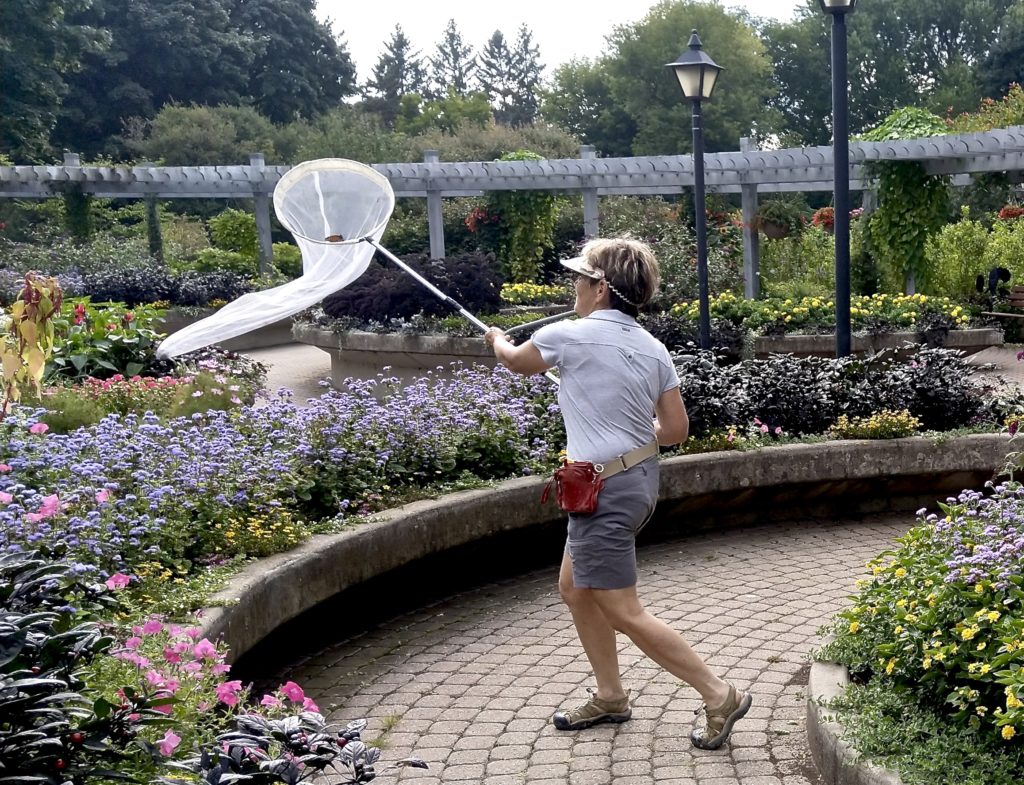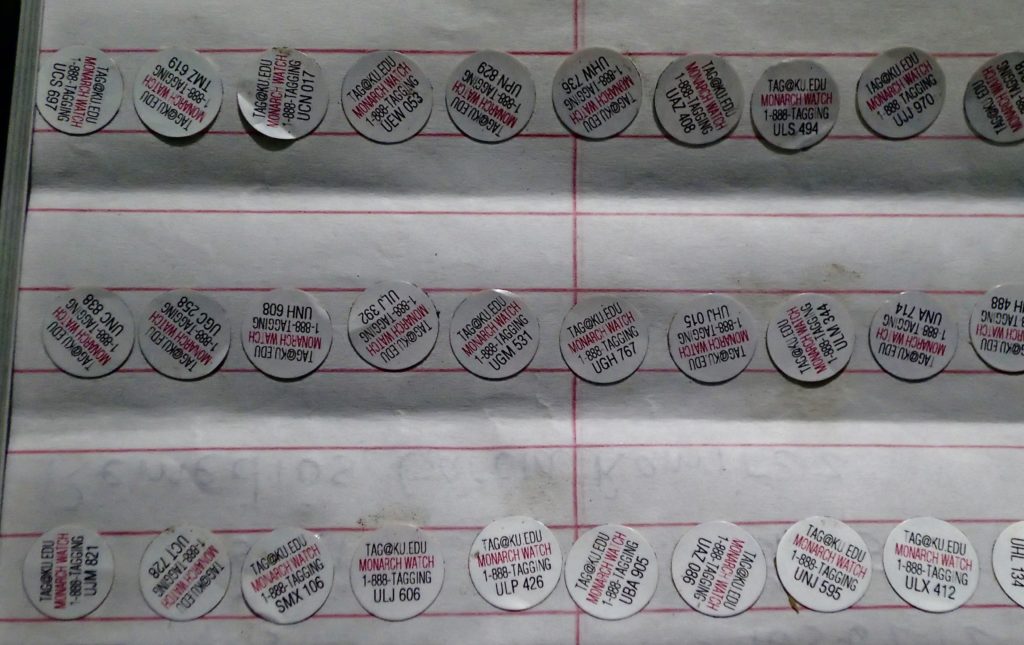Earlier this month, I received that familiar orange envelope from Monarch Watch. My tags had arrived. As caterpillar hunting and rearing was winding down, tagging season would soon begin.
I was excited. They thrill of the hunt for caterpillars would be replaced by the capture and release of monarchs. Where was the best place to find them? Would the temperature and winds be right for a good bounty, or would the day be spent on a fruitless search? While the latter is preferred, I would always make the best of it by opening myself to other discoveries. Such was the case yesterday in Toronto.
I drove to one of my favourite haunts, and in the oppressive heat, made the rounds of the beautiful butterfly gardens on Lake Ontario. Only 10 or 15 monarchs, and I managed to snare only 6 of them. I didn’t get stung by the bees that I rounded up at the same time. I pride myself on getting the monarchs out of the net, tagged, and released in about 20 seconds.
I headed to a different site, where there were even fewer monarchs. I decided to descend the Scarborough Bluffs, to get my steps in, and perhaps discover something new. That I did. I found mating monarchs; the male was nectaring! And I got both the shot, and the video. Had nothing else happened, my day would have been a success.
I hiked down the steep hill to the stunning beach. Hot as all get out, I walked to a place where there were no people at all, and did something crazy. I went for the most delicious swim. I think I sizzled when my body submerged. Bliss. But I digress.
Back to mixed feelings. The arrival of the tags means that both monarch season, and the summer, are coming to an end. But more important than that, is the bittersweet moment I set that tagged monarch free. It’s bad enough when I catch a wild one, but to tag and release one that I have nurtured from an egg…. I’m sending it off on a challenging 3,000 kilometre journey to a place it has never been. Along the way it may be attacked by birds or dragonflies, run into a spider’s web, fall pray to an assortment of other predators, get hit by a car, endure or perish in a storm, get hit by insecticide, or have trouble finding enough food!
I diligently record the date, location, and other details of the release. Then I wait till March to learn whether my monarch was discovered in Mexico. The anticipation and excitement of seeing that one of my monarchs made it to Mexico, is tempered by the realization that it died there! It didn’t complete its mission of flying north in March and laying eggs! Most tags in Mexico are discovered by guides, on deceased monarchs. The whole process leaves me betwixt and between, but I am driven to do it. At least I know I am providing information to our scientists, especially Chip Taylor, and Monarch Watch.
Happy tagging!



I admire your dedication!